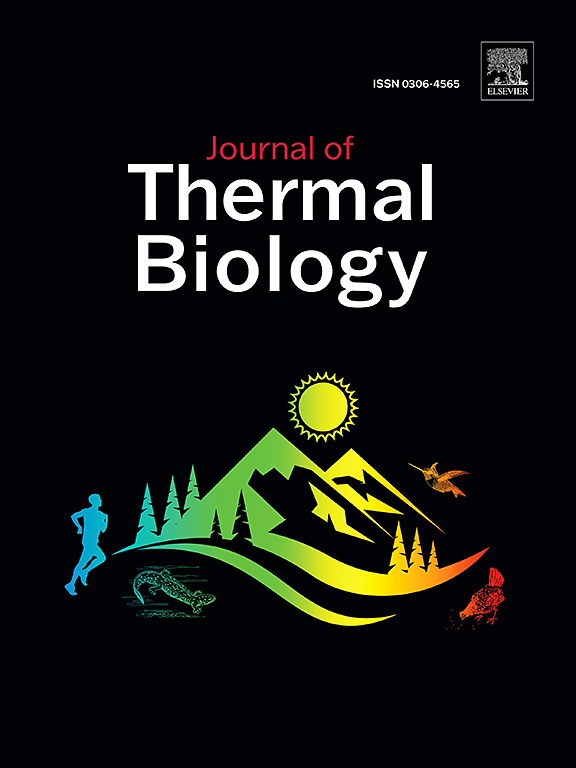Improving soft tissue laser ablation outcomes: A Markov chain Monte Carlo-based approach
IF 2.9
2区 生物学
Q2 BIOLOGY
引用次数: 0
Abstract
Laser ablation (LA) is a minimally invasive cancer therapy that uses laser energy to selectively heat and destroy cancerous tissues while minimizing damage to surrounding healthy tissue. Accurate temperature predictions derived from mathematical models are instrumental in optimizing treatment outcomes. These models assist surgeons during both pre-operative planning and intraoperative guidance. However, their accuracy can be compromised by inherent model limitations, measurement errors, or parameter uncertainties. To address this challenge, we combined the Delayed Rejection Adaptive Metropolis (DRAM) algorithm, an advanced version of the Markov Chain Monte Carlo (MCMC) method, with bioheat equations to tune and quantify key parameters influencing temperature distribution. Our findings showed that laser standard distribution, tissue absorption coefficient, and thermal conductivity impact the temperature profile, with correlation coefficients of −0.64, −0.36, and 0.15, respectively. To validate the model, temperature data were obtained from an experimental LA setup using ex vivo porcine liver, monitored by fiber Bragg grating sensors. After tuning the model parameters, the simulation accurately predicted temperature distributions within 1.0 ± 0.5 °C. Additionally, the parameter distributions were available at each time point during ablation, offering valuable insights for real-time decision-making, particularly regarding laser energy delivery.

改善软组织激光消融效果:基于马尔科夫链蒙特卡罗的方法
激光消融(LA)是一种微创癌症治疗方法,它利用激光能量选择性地加热和破坏癌组织,同时最大限度地减少对周围健康组织的损害。从数学模型中得出的准确温度预测有助于优化治疗结果。这些模型有助于外科医生进行术前计划和术中指导。然而,它们的准确性会受到固有模型限制、测量误差或参数不确定性的影响。为了应对这一挑战,我们将延迟抑制自适应大都市(DRAM)算法(一种马尔可夫链蒙特卡罗(MCMC)方法的高级版本)与生物热方程相结合,以调整和量化影响温度分布的关键参数。研究结果表明,激光标准分布、组织吸收系数和导热系数对温度分布有影响,相关系数分别为- 0.64、- 0.36和0.15。为了验证该模型,利用离体猪肝脏的实验LA装置获得了温度数据,并通过光纤布拉格光栅传感器进行监测。在调整模型参数后,仿真结果准确预测了1.0±0.5°C范围内的温度分布。此外,还可以获得消融过程中每个时间点的参数分布,为实时决策提供有价值的见解,特别是关于激光能量输送的决策。
本文章由计算机程序翻译,如有差异,请以英文原文为准。
求助全文
约1分钟内获得全文
求助全文
来源期刊

Journal of thermal biology
生物-动物学
CiteScore
5.30
自引率
7.40%
发文量
196
审稿时长
14.5 weeks
期刊介绍:
The Journal of Thermal Biology publishes articles that advance our knowledge on the ways and mechanisms through which temperature affects man and animals. This includes studies of their responses to these effects and on the ecological consequences. Directly relevant to this theme are:
• The mechanisms of thermal limitation, heat and cold injury, and the resistance of organisms to extremes of temperature
• The mechanisms involved in acclimation, acclimatization and evolutionary adaptation to temperature
• Mechanisms underlying the patterns of hibernation, torpor, dormancy, aestivation and diapause
• Effects of temperature on reproduction and development, growth, ageing and life-span
• Studies on modelling heat transfer between organisms and their environment
• The contributions of temperature to effects of climate change on animal species and man
• Studies of conservation biology and physiology related to temperature
• Behavioural and physiological regulation of body temperature including its pathophysiology and fever
• Medical applications of hypo- and hyperthermia
Article types:
• Original articles
• Review articles
 求助内容:
求助内容: 应助结果提醒方式:
应助结果提醒方式:


